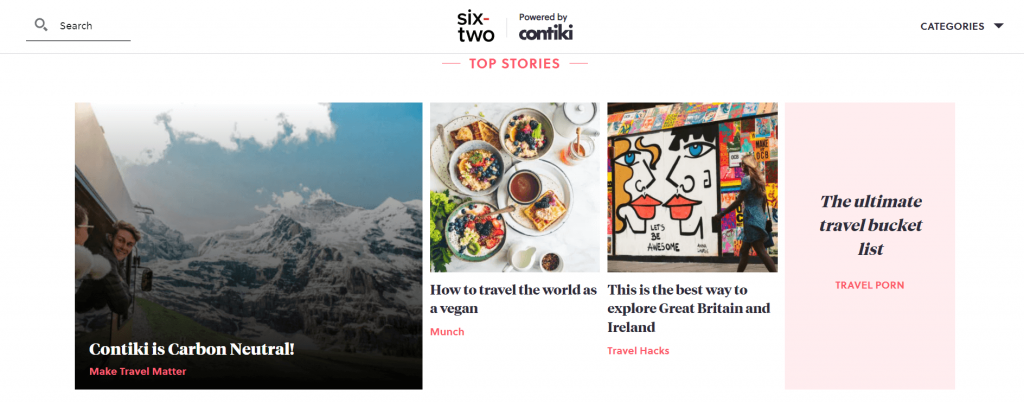Many people look for ways to expand their online presence and while one of the most popular strategies is launching a blog, not everyone knows what is a blog and how to start one.
When blogs first emerged around 1994, people used them mainly to share their personal lives, including their experiences and interests. Now, blogs have become an essential online marketing strategy for businesses and one of the most profitable career choices for individuals.
The interface of blogs has changed significantly over time. Bloggers can now integrate various widgets and plugins into their platforms, such as a social media feed, a contact form, or an author profile.
In this article, you’ll learn what makes a blog different from a regular website. We’ll also discuss common blog types and the necessary components such as a hosting plan to start your own blog.
What Is a Blog Used For?
When blogs first appeared on the world wide web, their goal was mainly personal use, such as sharing stories, interests, and thoughts. We will take a look at the most common uses for a blog:
To Educate Others and Build Online Presence
While a blog’s function remains the same, the type of content is more diverse. While many blogs still work like online diaries, some have started blogging to educate others on a specific subject or to build a professional online presence.
For example, David Winer – author of one of the longest-running blogs, Scripting News – publishes essays on software development, technology trends, and daily life on his personal web pages.
On the other hand, Natasha Kravchuk shares recipes and tutorials on using specific kitchen tools on her food blog, Natasha’s Kitchen. Her blog is a go-to resource for recipes, including holiday and vegetarian options.
As previously mentioned, blogging has also become a profitable career choice, especially during the pandemic. In fact, over 50% of blogs gained traffic, and about 35% of bloggers increased their revenue in this period.
To Help a Business With Brand Awareness
Many organizations and businesses use blogs as part of their content marketing strategies to boost brand awareness and increase conversions.
A business’s blog content usually focuses on industry-related information that may interest its target market. Often, a team of writers runs the blog instead of a single admin.
Take a look at Evernote’s corporate blog. It shares tips on productivity and organization, as well as how its products help optimize these processes. The brand also uses its blog to share feature and company updates.
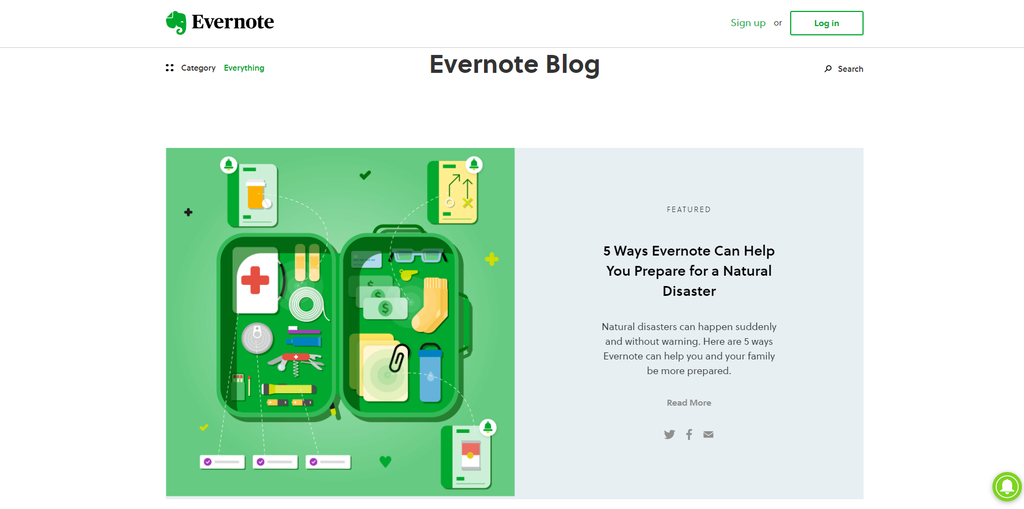
To Promote Programs And Attract Visitors
For instance, many businesses create blogs to promote their programs in the hope of attracting more visitors and leads. We see this often with educational institutions where they try to attract more students to enroll in their programs.
UCLA’s Bruin Blog is an excellent example of this practice. It tells the stories of students from different backgrounds and majors and shows how life is on campus, including events and student organizations. So people who visit their blog are compelled to enroll and join their program.
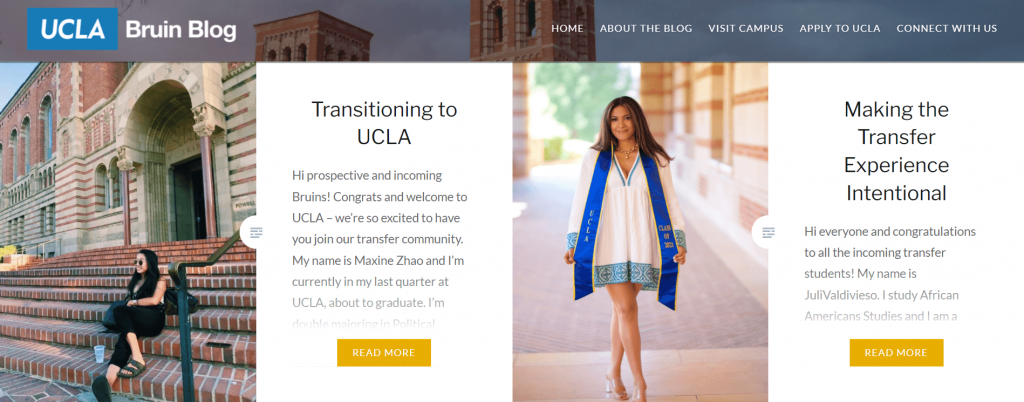
What Makes a Great Blog?
If you plan to create your own blog, it is helpful to know what makes an excellent one in the first place. Typically, you can expect to find the following elements in successful blogs:
High-quality blog content
- High-quality blog content. The content should demonstrate expertise, authoritativeness, and trustworthiness (EAT). It is also important to use easy-to-understand language and formatting to make the blog post digestible.
- Inviting headlines. These reveal what the content is about and help attract visitors to the content, as people will click search engine results if the headlines are compelling.
- Regularly-updated content. A regular publishing schedule helps people know when to visit the blog for new content. Search engines also prioritize fresh and up-to-date content, helping increase rankings and website traffic.
- Smooth user experience (UX). Other than attractive design, great blogs generally have a seamless page experience as it is an important element in blog search engine optimization (SEO). It includes mobile friendliness, HTTPS, and loading speed – including improving Core Web Vitals, the performance metrics assessing how good user experience is.
- Active reader engagement. It refers to any type of action readers take when visiting a blog, such as reading the article from start to finish, leaving comments, and sharing the blog post on their social media profiles.
- Good user interface (UI). A blog needs an aesthetically pleasing web design to make a memorable first impression, including layout, typography, and icons. Blogger owners also have to ensure that the design is simple, intuitive, and consistent throughout the entire blog.
Take a look at the Six-Two travel blog. It features complete travel guides, from tips on different places to inspirational stories from travelers.
It also has a good balance of UI and UX design principles. Six-Two organizes the content on a grid layout while keeping the color scheme simple, giving it a captivating look yet uncluttered interface. The blog also loads fast and is mobile-friendly.
7 Types of Blogs
Now that you have learned the definition of blogging and what makes a blog successful, let’s discuss the seven common types of blogs.
- Personal blog. This type of blog usually works like an online diary where the blogger shares opinions, often not aiming to reach a target audience or sell an item. Personal blogs can discuss various subjects, from family events and self-reflection to work projects.
- Niche blog. Provides information on a particular topic, usually related to the blogger’s passions, skills, and knowledge. Examples of this blog type include book blogs, food blogs, and lifestyle blogs.
- Multimedia blog. It uses a blog format but publishes multimedia content, like videos and podcasts, instead of written posts. It also usually includes the video or podcast’s summary, table of contents, and essential quotes.
- News blog. Content on this blog focuses on the latest happenings and new releases in a specific industry. Unlike other blogs, news blogs typically do not usually include opinions or personal content.
- Company or business blog. Its primary purpose is publishing content relevant to a company’s industry or updating the target market regarding any changes within its business. It may be a section on a company website or an independent site.
- Affiliate blog. A blog based on affiliate marketing – the practice of promoting a third party’s products and services. Affiliate blog owners will receive a commission when someone purchases from their custom links. Typical articles on this blog include product reviews and “best-of” listicles.
- Reverse blog. Also known as group blogs, multiple authors create blog posts on related topics and the blog owner is the one who proofreads and posts content.
Some blogs focus on a specific category, but it is also possible for a blog to combine several types. For instance, Caitlin da Silva’s personal blog contains posts with affiliate links and multimedia content.
For inspiration, check our comprehensive list of blog examples covering the best blogs from various niches, including finance and travel blogs.
What Is the Difference Between a Blog and a Website?
Blogs work to present fresh content – content that is updated frequently. Meanwhile, traditional websites provide static information about a person, group, or subject.
Reedsy is an example of an otherwise static website that contains a blog section.
The main content consists of web pages that inform visitors about the company’s writing and editing services, which remain unchanged for a long time.
Meanwhile, the blog section has new blog posts added every few days to educate readers about book writing and publishing. The blog automatically offers more frequent updates than the other sections, like the About and Apps pages.
Blog posts usually have a comment section where the readers and author engage – a great way to gain feedback and foster a personal relationship with visitors.
However, a comment section is uncommon for a typical web page as it does not generally encourage audience engagement.
Blogs also often have a built-in Really Simple Syndication (RSS feed), a link that sends content to a web browser or feed reader app like Google Reader.
Visitors can subscribe to your blog’s RSS feed and get updates whenever you publish a blog post. Digital marketers often connect their blog’s RSS feed to web push notifications or email newsletters to inform subscribers about recent posts and product announcements.
Many blogs are also independent – making up an entire website and displaying the posts directly on the homepage, like Ann Althouse’s blog, Althouse.
Why Do You Need Your Own Blog?
For personal use, blogging is a great way to express thoughts and opinions, while businesses can create a blog to educate their target audience.
Moreover, now everyone can start a blog. Unlike the early days of blogging that required coding skills to even update a blog post, people can now use blogging software such as WordPress and Blogger. It lets people create a blog within minutes without worrying about technical complexities.
However, to become successful bloggers, owners need to identify the reasons and purposes for maintaining their blogs.
How Do Bloggers Get Paid?
Bloggers’ earnings depend on their traffic and monetization methods. Generally, blogs with hundreds of thousands of web page views have an easier time generating revenue by selling products or displaying pay-per-click (PPC) ads.
Bloggers can also encourage readers to buy products using their affiliate links and work with brands for sponsored posts.
As previously mentioned, blogging has also become a profitable career choice, especially during the pandemic. In fact, over 50% of blogs gained traffic, and about 35% of bloggers increased their revenue in this period.
What Is the Difference Between a Blog and a Website?
Blogs work to present fresh content – content that is updated frequently. Meanwhile, traditional websites provide static information about a person, group, or subject.
Reedsy is an example of an otherwise static website that contains a blog section.
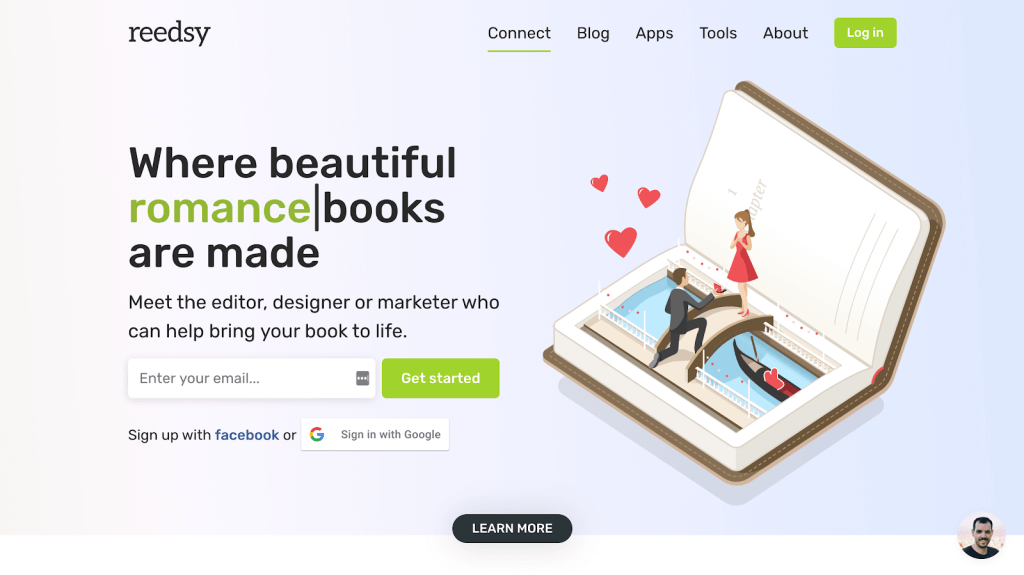
The main content consists of web pages that inform visitors about the company’s writing and editing services, which remain unchanged for a long time.
Meanwhile, the blog section has new blog posts added every few days to educate readers about book writing and publishing. The blog automatically offers more frequent updates than the other sections, like the About and Apps pages.
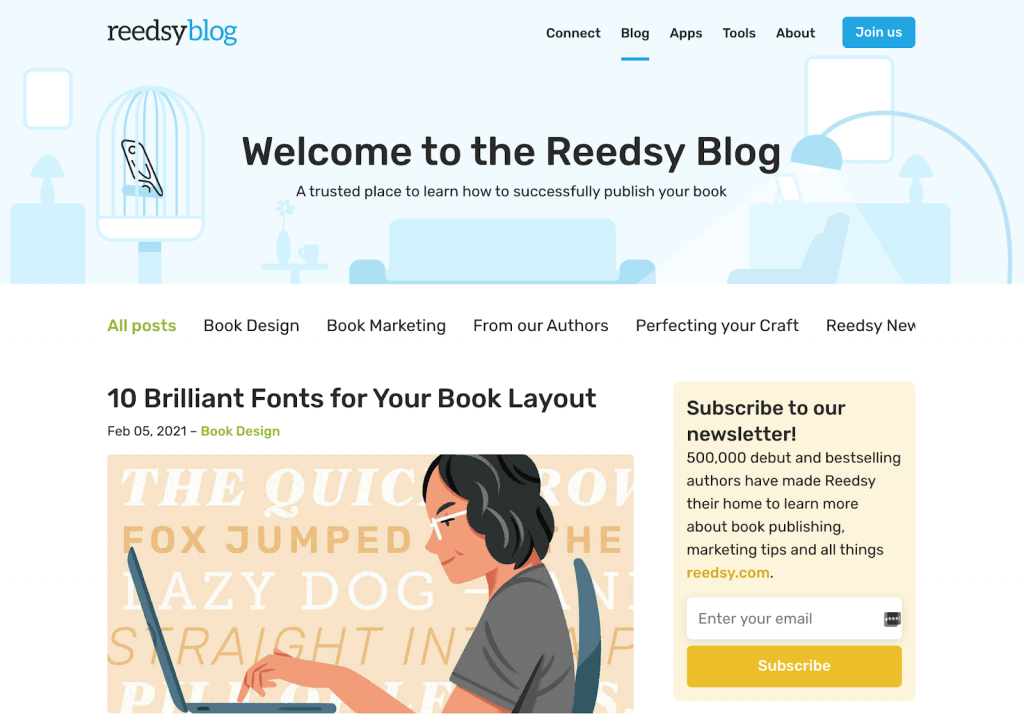
Blog posts usually have a comment section where the readers and author engage – a great way to gain feedback and foster a personal relationship with visitors.
However, a comment section is uncommon for a typical web page as it does not generally encourage audience engagement.
Blogs also often have a built-in Really Simple Syndication (RSS feed), a link that sends content to a web browser or feed reader app like Google Reader.
Visitors can subscribe to your blog’s RSS feed and get updates whenever you publish a blog post. Digital marketers often connect their blog’s RSS feed to web push notifications or email newsletters to inform subscribers about recent posts and product announcements.
Many blogs are also independent – making up an entire website and displaying the posts directly on the homepage, like Ann Althouse’s blog, Althouse.
Conclusion
Creating a blog has many advantages. It can help individuals build a personal brand and generate an extra or full-time income.
If you plan to blog as a way to make money online, consider picking a profitable niche to maximize the opportunities for better-paying sponsored posts or affiliate offers.
Business owners also create blogs to improve their website rankings on search engines, attract customers, and develop a loyal online community.
Whatever your purpose is, great blogs don’t focus on simply publishing content. It is essential to consider its quality, consistency, and overall web design.
If you want to create your first blog, ensure that you purchase a suitable domain name and the best hosting plan for you. Then, select a blogging platform and develop your content writing skills by joining online courses.
FAQ
What Is Blogging?
Blogging refers to the process of managing a blog, from idea generation to the publishing process. It includes the necessary tasks people need to run a blog, such as writing a blog post, promoting it, and practicing link-building strategies.
What Is a Blogger?
A blogger is the blog owner or person who maintains and runs the blog. Bloggers also foster relationships with their readers and other bloggers by encouraging online conversations in the comment section.
What Is a Blog Post?
Blog posts are, most commonly, pieces of writing published on a blog. Blog posts can also include other forms of content, like images, forms, and videos.
How Do You Write a Blog Post?
The initial step when writing a blog post is to choose a topic. Conduct keyword research using a tool like Keyword Tool or AnswerThePublic. Decide on a blog post format and create an outline. Once you have a clear idea of the structure of the post, it’s writing time.

